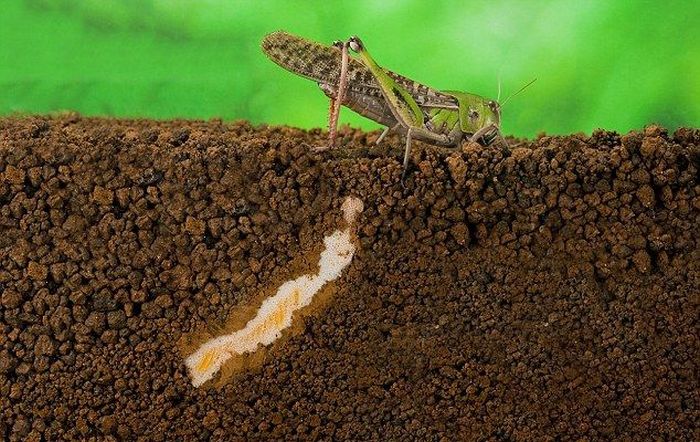|
|
How Locust Lays Eggs
|
In addition, a number of "grasshopper" species such as the Senegalese grasshopper Oedaleus senegalensis, and the rice grasshopper Hieroglyphus daganensis (both from the Sahel), often display locust-like behavior and change morphologically on crowding.
Swarming behavior
There is no consistent taxonomic distinction between locust and grasshopper species; the basis for the definition is whether a species forms swarms under intermittently suitable conditions. In English the term "locust" is used for grasshopper species that change morphologically and behaviorally on crowding, forming swarms that develop from bands of immature stages called hoppers. These changes are examples of phase polymorphism; they were first analysed and described by Sir Boris Petrovich Uvarov. He discovered them in his research on the desert locust, whose solitary and gregarious phases had previously been thought to be separate species. They also are referred to as statary and migratory morphs (though strictly speaking their swarms are nomadic rather than migratory). Charles Valentine Riley and Norman Criddle were also involved in achieving the understanding and control of locusts.
|
|









